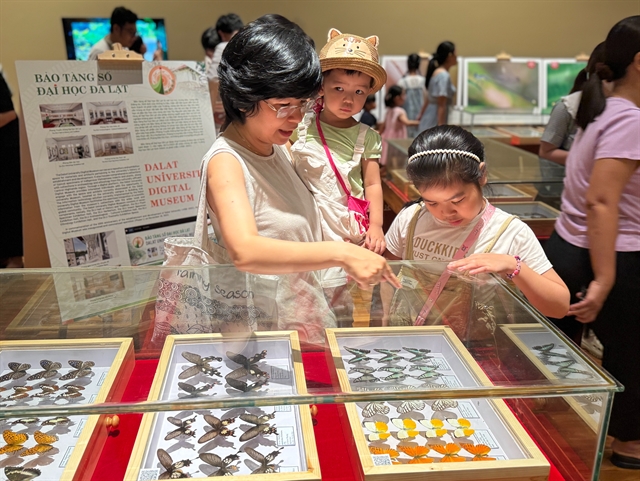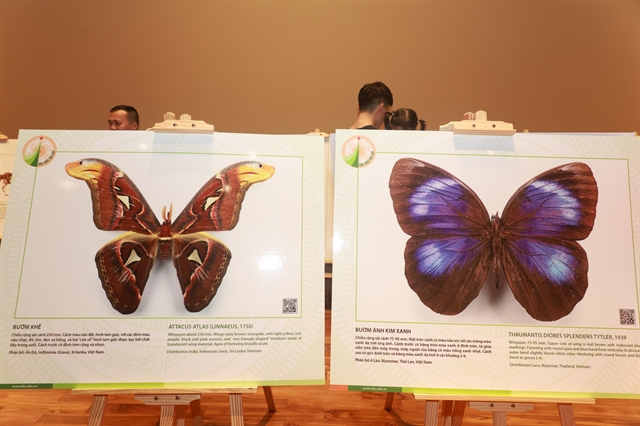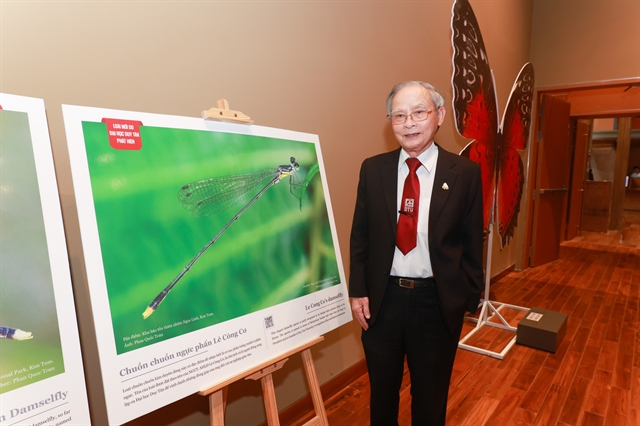To run until July 13, the Đa dạng sắc màu côn trùng Việt Nam (The Diversity of Vietnamese Insects) exhibition at the Đà Nẵng Museum features hundreds of rare insect specimens, aiming to spotlight the diversity and uniqueness of the country’s endemic insects.

Visitors flock to see rare insect specimens at the Đa dạng sắc màu côn trùng Việt Nam (The Diversity of Vietnamese Insects) exhibition at the Đà Nẵng Museum. Photo nld.vn
ĐÀ NẴNG – Hundreds of rare insect specimens are being displayed at the Đa dạng sắc màu côn trùng Việt Nam (The Diversity of Vietnamese Insects) exhibition at the Đà Nẵng Museum.
To run until July 13, the exhibition aims to spotlight the diversity and uniqueness of the country’s endemic insects.
It features more than 100 rare specimens and 150 photos and posters of various butterflies, moths, beetles, dragonflies, and cicadas.

The exhibition showcases hundreds of specimens of butterflies, moths, beetles, dragonflies, and cicadas. Photo nld.vn
Some notable species include the five-bar swordtail butterfly, great emperor butterfly, five- and three-horned rhinoceros beetles, rare forest dragonfly, and various endemic species from forests of the Central Highlands.

Specimens of the giant atlas moth and blue morpho butterfly. Photo nld.vn
It is jointly organised by Duy Tân University and Đà Lạt University, both renowned for their insect and biodiversity research.
The items on display are the result of extensive collaborative research and fieldwork by the two.

Dr Phan Quốc Toản, director of Duy Tân University’s Centre for Entomology and Parasitology Research, stands beside a photo of a damselfly species he discovered. The species is scientifically named Coeliccia lecongco in honour of university founder Lê Công Cơ. Photo nld.vn
The exhibition highlights the biological and ecological characteristics of insects, emphasising their significance to both nature and human life, such as their roles in pollination, pest control, medicinal and food production, and biotechnology.
It also seeks to promote environmental protection, raise public awareness of climate change and encourage biodiversity conservation. – VNS